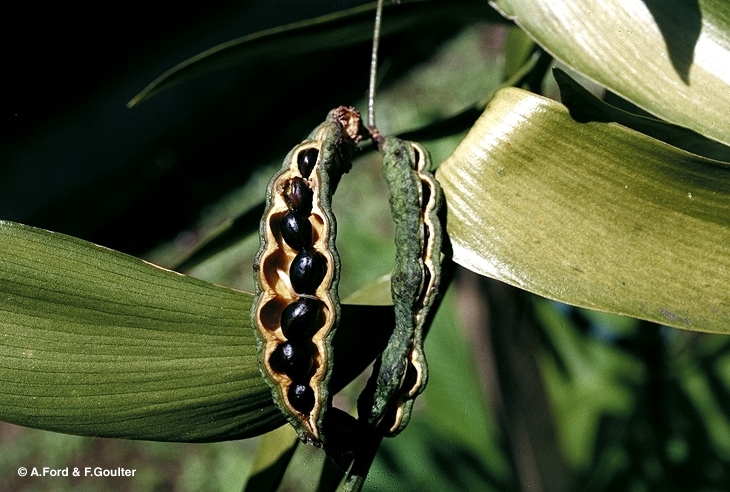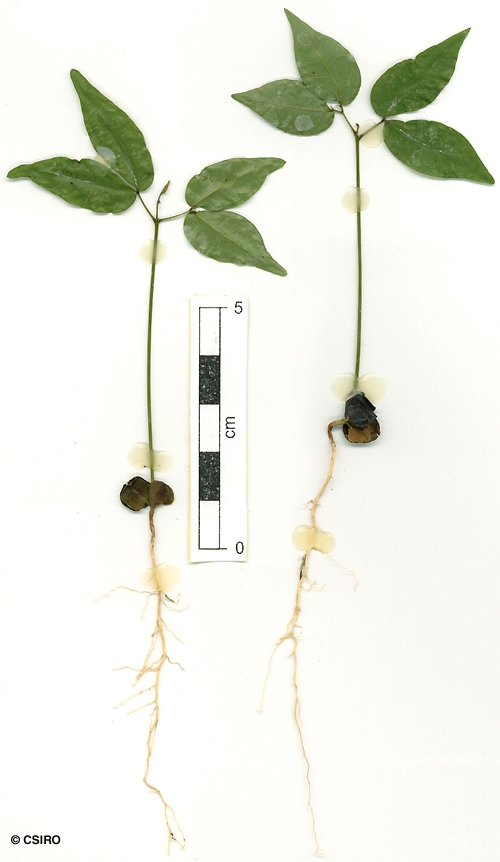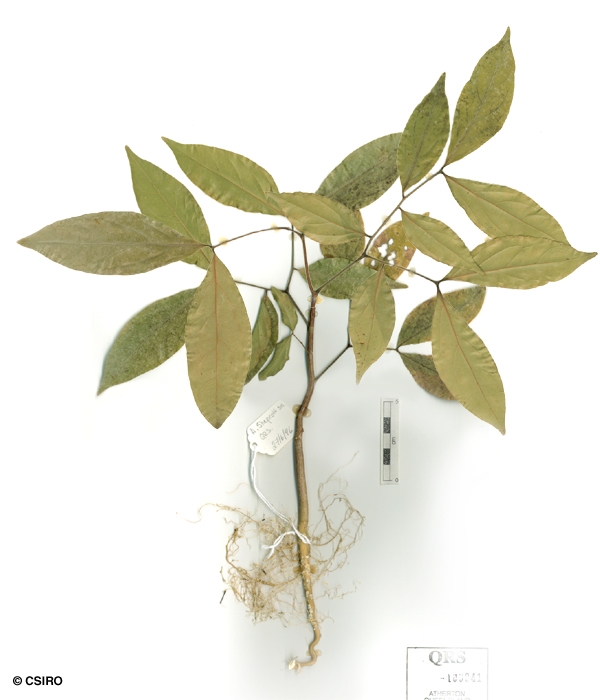Australian Tropical Rainforest Plants - Online edition
Archidendron kanisii R.S.Cowan





Cowan, R.S. (1996) Nuytsia 11: 18. Type: Cooper Ck, Cook District, Qld, 10 Dec. 1986, G. Sankowsky 573 & N. Sankowsky; holo: BRI; iso: BRI.
Can grow into a small tree but also flowers and fruits as a shrub.
Leaves bipinnate, consisting of 4-8 leaflets. Leaflet blades about 9.5-13 x 3-5 cm, leaflet stalks about 0.3-0.4 cm long. Stipules small, visible only on young shoots. Conspicuous saucer-shaped glands visible on the secondary axes between the terminal pair of leaflets. A similar gland usually visible on the upper surface of the compound leaf petiole near its junction with the pair of compound leaf axes.
Inflorescence produced on a peduncle about 15-30 mm long. Individual flowers about 3-5 mm diam., sessile. Calyx tube about 3.5-4.5 mm long, lobes about 1 mm long. Corolla tubular, tube about 13-14 mm long, lobes about 3 mm long. Stamens about 30-40, filaments fused towards the base, filaments about 15-20 mm long. Anthers about 0.6 mm long. Style about 25-35 mm long. Stigma capitate, terminal.
Fruits yellow or orange-yellow on the inner surface. Seeds about 7 x 5 mm. Testa brown.
First pair of leaves compound, each leaf with two leaflets, stipules about 1 mm long. Leaflet blades ovate, underside hairy particularly along the midrib. A small filiform gland usually present on the underside of each leaflet stalk. Compound leaf petiole usually extended beyond the point of attachment of the leaflet stalks as a filiform trichome. At the tenth leaf stage: leaves compound, bipinnate, each leaf with about 6-8 leaflets. Leaflet blades about 7.5-10 x 3-3.5 cm. Glands or appendages usually visible at the end of the compound leaf petiole and at the end of the secondary axes. Freshly broken roots emit an odour like that of shallots (Allium ascalonicum). Seed germination time 13 to 26 days.
Endemic to NEQ, known only from collections made in the Daintree-Cape Tribulation area. Altitudinal range from near sea level to 200 m. Grows as an understory plant in lowland rain forest.





